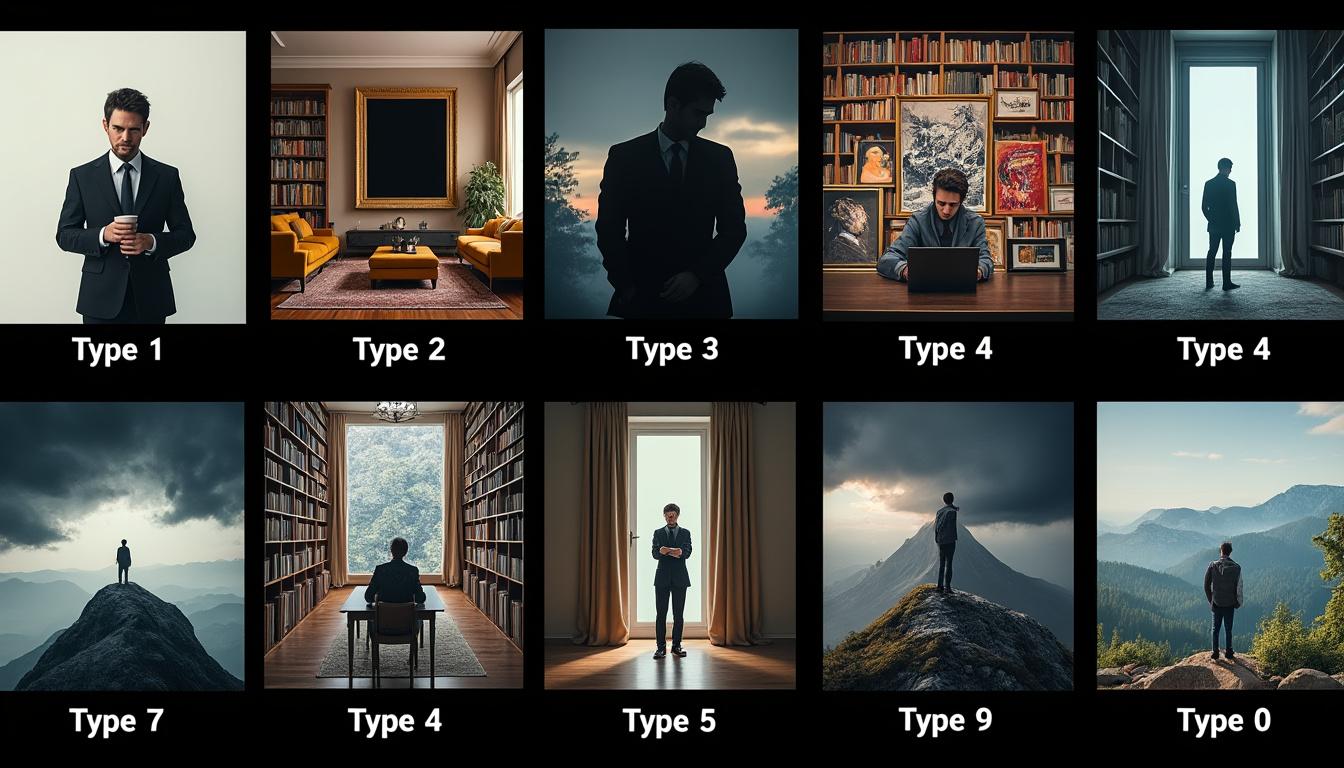“`html
Have you ever wondered what personality tests really reveal? These mysterious tools can seem intimidating, but they play a crucial role in various professional fields. Whether you’re applying for a position in sales, engineering, or financial analysis, you might be required to take them.
Personality tests have become essential in the recruitment process. They allow recruiters to better understand your skills and your soft skills. Among the most common are questionnaires such as the MBTI or the PAPI, as well as projective tests like Murray’s TAT or the Rorschach test. These evaluations aim to identify character traits that could influence your work performance. For example, an extraverted profile may be preferred for a sales position, while a high degree of emotional stability is sought for high-risk occupations. It is essential to prepare for these tests to highlight your qualities and fit for the targeted position.
Projective tests engage your imagination by presenting you with ambiguous stimuli to unveil your feelings, impulses, and unconscious desires. The Rorschach test, for example, uses symmetrical ink blots to interpret your reactions and deep thoughts. Although these tests tend to fade away due to their doubtful reliability, some, like the Rosenzweig test, remain popular, especially for sales positions.
On the other hand, self-assessment inventories like the MMPI or Likert scales rely on multiple-choice questions or numbered scales to measure your personality profile. These tests are typically administered by computer and can take from a few minutes to several hours depending on their complexity.
Employers use these tools to predict your reactions to various professional situations and to determine if you possess the necessary qualities such as motivation, self-confidence, or the ability to work in a team. Furthermore, in the law enforcement sector, personality tests are essential for selecting the most suitable candidates, thus ensuring optimal performance and enhanced security.
In conclusion, while personality tests are not determinative on their own, they constitute a key element of the recruitment process. They help complement the assessment of technical skills and provide a more comprehensive view of your professional profile. Preparing for these tests by understanding their objectives and methodologies can greatly improve your chances of success during interviews.

Projective tests and the MBTI are two distinct approaches to personality exploration. Projective tests, such as the Rorschach test or the Thematic Apperception Test (TAT), rely on presenting ambiguous stimuli. The individual is invited to interpret these stimuli, thus revealing unconscious aspects of their personality, such as desires, fears, and internal conflicts.
In contrast, the MBTI (Myers-Briggs Type Indicator) is a structured self-assessment inventory that classifies individuals into 16 personality types based on four dichotomous dimensions: energy orientation (extraversion vs. introversion), perception (sensation vs. intuition), judgment (thinking vs. feeling), and lifestyle (judging vs. perceiving). Unlike projective tests, the MBTI uses multiple-choice questions to obtain direct and conscious responses.
The main difference lies in the nature of the responses and the interpretation of the data. Projective tests allow for a deeper and more subjective exploration of personality, often used in clinical settings. The MBTI, on the other hand, offers a clear and systematic categorization, favored in professional environments to improve communication and team cohesion.
Personality tests play a crucial role in various fields, including recruitment, clinical psychology, and personal development. Among these tools, projective tests and the MBTI (Myers-Briggs Type Indicator) are particularly popular yet fundamentally different in their approach and use. Understanding these differences is essential to choose the tool best suited to your needs, whether to better understand yourself, evaluate candidates, or deepen a psychological analysis. This article explores in detail how these two types of tests differ in personality exploration, examining their methodology, objectives, reliability, and practical applications.
Projective tests: an intuitive approach
Projective tests are based on the idea that individuals project their own feelings, desires, and unconscious conflicts onto ambiguous stimuli. A classic example is the Rorschach test, where participants interpret symmetrical ink blots. This method reveals deep aspects of personality that are not accessible through structured questionnaires. Projective tests are often used in clinical psychology to diagnose mental disorders or in coaching to better understand clients’ underlying motivations. Their open nature encourages free and spontaneous expression, offering a rich qualitative wealth of information. However, this same freedom can pose challenges in terms of standardization and reliability, as interpretations can vary according to the evaluator.
The MBTI: a well-defined structure
The MBTI (Myers-Briggs Type Indicator) is a structured tool based on Carl Gustav Jung’s theory of psychological types. It identifies 16 personality types by evaluating four fundamental dimensions: Extraversion vs Introversion, Sensation vs Intuition, Thinking vs Feeling, and Judging vs Perceiving. Unlike projective tests, the MBTI uses multiple-choice questions to classify individuals into specific types. This approach allows for clear and standardized interpretation, facilitating its use in professional settings for recruitment, training, and team development. However, some critics point out that the MBTI can be too reductive and does not account for the complexity and fluidity of human personality.
Comparison of methodologies
The main difference between projective tests and the MBTI lies in their methodology. Projective tests use ambiguous stimuli and require open responses, encouraging a deep and subjective exploration of personality. In contrast, the MBTI relies on a series of closed questions, providing a more objective and quantitative assessment. This distinction affects how the results are interpreted: projective tests provide narrative and qualitative insights, while the MBTI offers distinct categories that are easy to compare. Moreover, projective tests often require specialized training for their administration and interpretation, while the MBTI can be used by a broader range of professionals due to its simplicity.
Objectives and purposes
Projective tests and the MBTI serve different objectives in personality exploration. Projective tests mainly aim to unveil unconscious and deep aspects of personality, useful for clinical diagnoses or complex psychological analyses. They are particularly effective in identifying internal conflicts, traumas, or hidden motivations. In contrast, the MBTI is designed to help better understand an individual’s natural preferences in perception and decision-making. It is widely used in professional contexts to enhance communication, collaboration, and human resource management. Thus, the choice between these two types of tests depends on the specific needs of the assessment, whether it is for an in-depth analysis or a practical and structured evaluation.
Reliability and validity
Reliability and validity of tests are essential criteria for evaluating their usefulness and accuracy. Projective tests, although valued for the depth of their insights, often suffer from inter-evaluator reliability issues and empirical validity problems. Interpretations can vary significantly from one professional to another, which makes it difficult to standardize results. In contrast, the MBTI offers better reliability due to its standardized structure and closed questions, allowing for consistent comparisons between individuals. However, some aspects of the MBTI, such as the rigid dichotomy of types, can limit its validity in not capturing the full complexity of human personality.
Applications in the professional environment
In the professional environment, projective tests and the MBTI are used for distinct yet complementary purposes. Projective tests can be employed in advanced recruitment processes or in personal development frameworks to identify deep character traits and hidden potentials. For example, a doctor might use the Rorschach test to assess the emotional resilience of a candidate for a high-responsibility position. The MBTI, on the other hand, is commonly used to improve team dynamics, facilitate internal communication, and aid in individual skill development. It allows for a better understanding of behavioral preferences and provides tools to harmonize interactions within teams.
Concrete examples and statistics
Studies show that projective tests and the MBTI have varying success rates depending on their use. For example, a study conducted by the American Psychological Association revealed that projective tests were preferred in clinical assessments for their ability to uncover complex information about the unconscious. On the other hand, the MBTI has been adopted by more than 70% of large companies worldwide for talent development and team management initiatives. A concrete example of the use of the MBTI is the company Google, which combines it with other tools to optimize recruitment and talent retention. These statistics illustrate how each type of test meets specific needs and contributes differently to organizational and personal objectives.
Advantages and disadvantages
Each method of personality exploration presents distinct advantages and disadvantages. Projective tests offer analytical depth and the ability to reveal subconscious aspects of personality, which is valuable for psychological diagnostics or complex analyses. However, they require specialized expertise for administration and interpretation, and their subjective nature can limit their application in contexts requiring strict objectivity. The MBTI, on the other hand, is quick to administer, easy to understand and interpret, and widely accepted in professional environments. Nevertheless, its rigidity can sometimes overlook the fluidity and complexity of human personality, and it is often criticized for its lack of strong empirical support in certain measurement dimensions.
Choosing the right tool
The choice between projective tests and the MBTI mainly depends on the objectives pursued. If the goal is to obtain a deep and nuanced understanding of personality, particularly for clinical or therapeutic analyses, projective tests are more appropriate. In contrast, for professional needs such as recruitment, training, or improving team communication, the MBTI constitutes a more practical and effective option. It is also possible to combine both types of tests to benefit from the strengths of each, using the MBTI for a rapid and structured assessment, then projective tests for a more detailed and qualitative exploration when necessary. This hybrid approach allows for maximizing the strengths of each tool and obtaining a more comprehensive view of personality.
#>
“`html
FAQ
Q: What is a projective test and how does it differ from the MBTI?
A: Projective tests are methods of evaluating personality where individuals respond to ambiguous stimuli, such as images or drawings, in order to reveal their feelings, desires, and unconscious conflicts. In contrast to the MBTI (Myers-Briggs Type Indicator), which is a structured personality inventory based on multiple-choice questions aimed at identifying behavioral and cognitive preferences, projective tests explore deeper and often unconscious aspects of personality.
Q: What are the advantages of projective tests compared to the MBTI in personality exploration?
A: Projective tests allow access to more subconscious aspects of personality, thus providing a nuanced understanding of motivations and internal conflicts. They are particularly useful in clinical contexts where exploring unconscious dynamics is essential. In contrast, the MBTI is more structured and easy to administer, making it suitable for professional environments for assessing work preferences and team interactions.
Q: What aspects of personality do the MBTI and projective tests evaluate differently?
A: The MBTI focuses on individuals’ natural preferences across four main dimensions: attention (extraversion vs. introversion), perception (sensation vs. intuition), judgment (thinking vs. feeling), and lifestyle (judging vs. perceiving). In contrast, projective tests explore deeper and often unconscious aspects of personality, such as desires, fears, and internal conflicts, by allowing individuals to project their own feelings onto ambiguous stimuli.
Q: In what situations is it preferable to use a projective test rather than the MBTI?
A: Projective tests are particularly useful in clinical, therapeutic, or in-depth research contexts where a detailed understanding of unconscious processes and internal dynamics is necessary. They are also beneficial for assessing individuals who may not be able to respond reliably to structured questionnaires. In contrast, the MBTI is preferable in professional contexts for quick assessments of work preferences and to facilitate team communication.
Q: Are projective tests more reliable than the MBTI?
A: Projective tests are often criticized for their lack of standardization and reliability compared to tools like the MBTI. The MBTI, while also subject to criticism, benefits from greater standardization and a stronger psychometric validity for identifying personality preferences. Projective tests, on the other hand, rely more on the subjective interpretation of the examiner, which can influence the consistency of the results.











